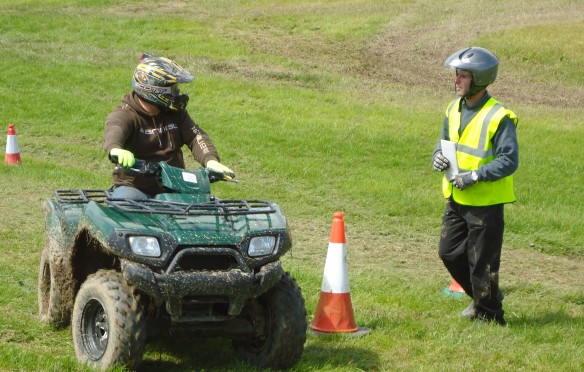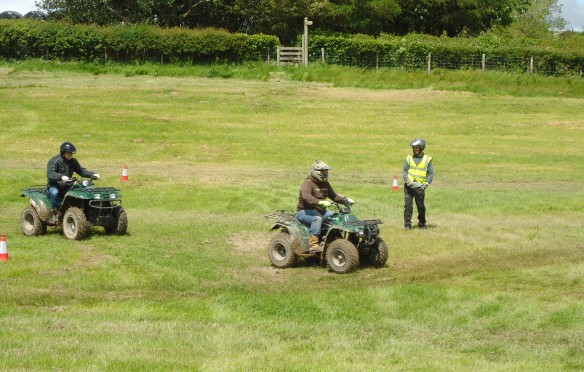4x4 Explore
0843 506 5432
info@4x4explore.co.uk
PERSONAL PROTECTIVE EQUIPMENT FOR ATV RIDER SAFETY
The single most important piece of protective gear you can wear is A HELMET. A good helmet can help prevent serious head injuries. Studies have shown that wearing a helmet DOES NOT reduce essential vision and hearing. Operating without an approved motorcycle helmet increases your chances of severe head injury in the event of an accident.
THE RIGHT HELMET FOR YOU...
Whilst colour, design and price may influence your decision regarding which helmet to buy, protection should be your first consideration.The full-face helmet provides the most protection since it covers more of your face.Recent design improvements in shell material and interior ventilation have improved comfort.The next choice in protection is the three-quarter (open-face) helmet. It does not offer face and chin protection that full-faced helmets do, so if you chose this style, it should be used with mouth/chin protection.
For a helmet to offer the most protection possible it must be fitted properly.Your helmet should fit snugly but comfortably and be securely fastened.
The British Standard for Safety Helmets (January 2006) is BS 6658:1985. Please look for the British Standard 'Kitemark' and the number of the standard. The European Standard is UN ECE Regulation 22.05 (it will have a UN 'E' mark and the first two digits of the approval number will be '05').
A FACE SHIELD OR GOGGLES
Being able to see clearly will help you ride more safely. Operating without eye protection can result in an accident and increases your chances of a severe eye injury in the event of an accident.
An object such as a rock, branch or even a bug that hits you in the face can distract you: but if you are hit in the eyes, you could be blinded. Regular sunglasses do not provide enough protection when riding an ATV.
A face shield or goggles will help protect you. Eye protection should be:
• Free from scratches and manufactured to BS4110 OZA
• Securely fastened
• Tinted for riding on bright days, clear for night riding or yellow for over cast days.
The British Standard (January 2006) for goggles is BS EN 1938 and BS4110:1999 for visors. Visors approved to BS4110:1999 would also satisfy BS4110:1979 and its amendments. BS EN1938 is the national derivative of the harmonised European standard prepared for the Council Directive 89/686/EEC as amended.
GLOVES
Gloves should be of a quality that will help prevent your hands from getting sore, tired or cold, as well as offering protection in the event of a spill. Off-road style gloves, available at leading motorcycle and ATV dealerships, provide the best combination of protection and comfort. They are padded over the knuckles for added protection.
BOOTS
The minimum protective footwear is a pair of over-the-ankle boots with low heels to help prevent feet from slipping off the footrests. Off-road style over-the-calf ATV or motorcycle boots offer the best protection for feet, ankle and legs.
CLOTHING
It is important to protect your skin from scratches. A long sleeved jersey/sweater, shirt or T-shirt and long trousers are requirements for rider protection.
Off-road riding gear such as a sweater/jersey with shoulder pad/protection, chest protector and off road trousers with knee/shin and hip protection provide ATV riders with better protection.




